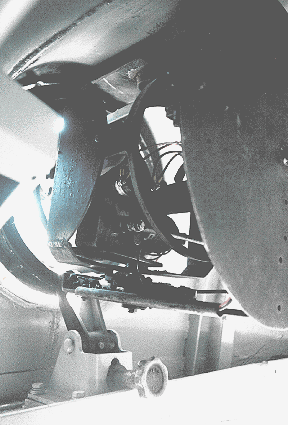
Within Pyle itself there is Mount Zion Chapel (English Baptist) and the parish church of St James ( Church in Wales) is a Grade I listed building. Also in Kenfig Hill are Pisgah Chapel, (Welsh Baptist), Bethal Community Church and St Joseph's Church (Roman Catholic). St Theodore's (Church in Wales), was built in 1889, and became a parish in 1923. Kenfig Hill, though a smaller settlement, has four places of worship. Pyle Rugby Football Club plays in the WRU Swalec League Division 3. There are three schools in the community: Cynffig Comprehensive School, Mynydd Cynffig Primary School and Pil Primary School. In 2010 Pyle Community Council were able to buy the strip of woodland, with its stream and old watermill, to ensure its survival and use for the village. An area of woodland known as The Collwyn is close to the west side of the village. There is also a large industrial estate which hosts some notable names and a garden centre. The leisure centre is a frequent school trip destination, attracting schools from the Cardiff area. The village has its own leisure centre, swimming pool, supermarket, library and petrol station. The ward elects three county councillors to Bridgend County Borough Council. Pyle is the name of the electoral ward which is coterminous with the community. Pyle was made a community in 2002, when the Cynffig community was split into two parts (the other being Cornelly), following a recommendation of the Local Government Boundary Commission for Wales. Lord Nelson stayed at Pyle Inn on his way to visit to naval installations in Pembrokeshire, as did Isambard Kingdom Brunel during the construction of the Great Western Railway line through South Wales. The street of Longlands Close in Pyle was the site of a coaching inn which was used by passing travelers using the west Wales to London turnpike. Besides the thriving collieries there were also coking plants and ironworks as well as a quarry where good quality building stone was extracted. Real property in the village of Pyle was valued at £3,949, of which £1,619 was in mines. In 1861, the population of the village was 1,192 distributed among 251 households. Writing in 1870, in the Imperial Gazetteer of England and Wales, John Marius Wilson described the parish of Pyle, including Kenfig and Skerr, to comprise 4,526 acres (1,832 ha) of land and 725 acres (293 ha) of water.

This gave rise to the church sometimes being referred to as the upside-down church, because the first stones moved would have been the higher ones in the original church. The walls of Pyle St James' parish church are reputed to have been moved stone by stone from the old town, relocated further inland as the sand encroached.

The road through Kenfig was diverted one and a half miles inland and brought Pyle to prominence while Kenfig dwindled into a straggle of a few houses. The early expansion of Pyle was brought about when the ancient borough of Kenfig was abandoned after being overwhelmed by sand during a catastrophic encroachment by the sea in the mid fifteenth-century. This is a weathered stone with an incised cross, dated to 11th or 12th century, moved to its present garden location in 1945 from 'between Kenfig and Pyle'. Early history Īn indication of early settlement is the Croes Siencyn Incised Stone, a Scheduled monument on Marlas Road, ( 51☃1′39″N 3☄1′56″W / 51.5275°N 3.6989°W / 51.5275 -3.6989 ( Pyle Incised Stone), grid ref: SS822823). Pyle railway station is on the Cardiff to Swansea section of the London to South Wales Main Line. Other communities in the vicinity are South Cornelly, North Cornelly, Kenfig and Porthcawl. Junction 37 on the motorway is one mile south of Pyle. It is on the main A48 road from Cardiff to Swansea and is just north of the M4 motorway which has superseded the trunk road for through traffic. Pyle is located approximately 26 miles west of Cardiff, 16 miles east of Swansea, 4 miles west of Bridgend and 6 miles southeast of Port Talbot. In this instance it may refer to the mouth of the River Kenfig, which is tidal for its first mile from the sea.Ī commonly stated, but erroneous derivation from the English word "pile" (a stake) is highly unlikely, with the only settlement in the United Kingdom known to have this derivation being a hamlet on the Isle of Wight.

The English name "Pyle" is derived from the Welsh Pîl, meaning a tidal inlet of the sea, this localised toponym is found along the coast of South Wales, from Pembrokeshire and into Somerset.


 0 kommentar(er)
0 kommentar(er)
